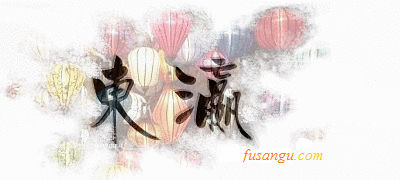
The Fukutoshin-sen is a railway line managed by Tokyo Metro (Tokyo Metoro), the city’s largest subway operator.
The line runs west of the city centre, connecting some of the city’s most popular tourist areas such as Ikebukuro, Shinjuku and Shibuya.
In this page we describe a one-day tour along the Fukutoshin Line. The article includes a programme suitable for short stays.
Main sightseeing places along the Fukutoshin Line
The Fukutoshin Line links major tourist areas in the western part of Tokyo. Below is a short description of these areas. While it is theoretically possible to visit all of them on a one-day tour, we suggest you opt for a less ambitious programme. You can do so by counting out one or two destinations.
Shibuya
The southern terminus of the Fukutoshin Line is Shibuya Station, a major gathering point in Tokyo, the centre of a vibrant entertainment and fashion hub, which should not be missed.
Next to the station is a statue of Hachiko, the dog which became a symbol of loyalty and devotion. Here you are at the northern side of Shibuya Crossing, the iconic crossroads. In front of you is Tsutaya, flagship store of a major chain of bookshops. To the left you will find Shibuya 109, a huge malls selling clothing and accessories for girls. If you continue walking southwards (you cannot miss it, just follow the crowds) you will eventually reach Centre Gai (Sentagai), a major shopping lane.
If you are into art, do not miss a visit to Nezu Museum. This can be coupled with a walk in Aoyama Cemetery, in Minato district.
Meiji Shrine
Meiji Shrine is a Shinto shrine erected in honour of Meiji Emperor. The shrine is set amid a large atmospheric park and is a major venue for traditional marriage processions.
Furthermore, Yoyogi Park is also an excellent cherry blossom spot. The area can be reached on foot from Meiji-jingumae Station, which is served by the Fukutoshin Line.
Harajuku
East of Meiji Shrine is Harajuku. Here are Omote-sando, a long avenue lined with high-end boutiques and Takeshita-dori, a gathering place for those who follow the most bizarre trends and styles.
Shinjuku
Travelling along the Fukutoshin Line you can reach the centre of Shinjuku on foot from Shinjuku-sanchome Station. Nearby are many interesting shops.
The first destination in the area can be Shinjuku-Gyoen, a large park which comprises different gardens and a unique variety of species. The park is a popular location for cherry blossom viewing hanami) and autumn colours contemplation (koyo). It is well worth a vist year-round. Among the most notable events is the chrysanthemum.
Along the way to Shinjuku Station, the core of the district, you can visit Isetan, one of the country’s best shopping mall.
The area around Shinjuku Station is an exceptionally dense neighbourhood full of shops, entertainment locals and eateries. There is a huge variety of stores and anyone can find something to their liking.
We suggest you do not miss on a visit to Hanazono Shrine, an oasis of peace amid the chaos of lights, sounds and crowds of Shinjuku.
From the observation decks of the Tokyo Metropolitan Government Building you can enjoy a wonderful view of Tokyo. Entrance is free of charge and restaurants and cafes are available to the public.
Ikebukuro
Ikebukuro is a major commercial district located west of Tokyo’s city centre. The train station, which is served by the useful loop line (JR Yamanote Line), is the centre of the neighbourhood and a destination in itself.
Around and under the station are large malls run by major chains such as Seibu. Many shops sell electronics.
Variants
If you enjoy walking you may choose to reach Meiji Shrine from Shibuya on food. Doing so allows you to explore the neighbourhood of Aoyama.
If you visit Tokyo during cherry blossom (which usually occurs between mid March and mid April) you can add a short tour in Meguro. Along the tiny Meguro-gawa canal are many beautiful cherry trees that create wonderful sights.
The Fukutoshin Line is linked to Tokyu-Toyoko Line, which provides a direct link between Shibuya and Yokohama via Jiyugaoka. If you opt for a quick visit to Yokohama, you can reach the city at the end of the itinerary described in this page. The transfer takes less than 1 hour.
Related articles:
Main article: Tokyo 3-day itinerary
Itineraries along the subway lines (Asakusa, Hibiya, Ginza, Marunouchi, Tozai, Mita, Namboku, Yurakucho, Chiyoda, Shinjuku, Hanzomon, Oedo, Fukutoshin)

